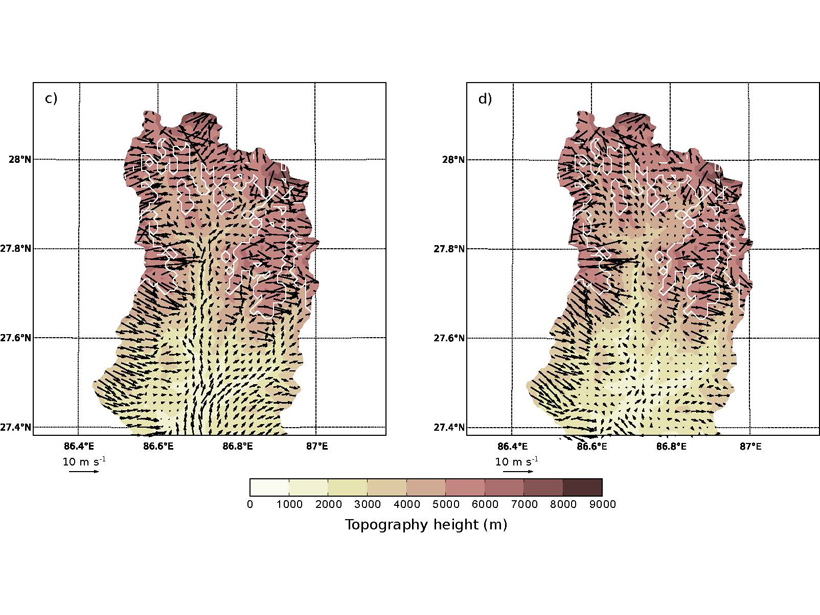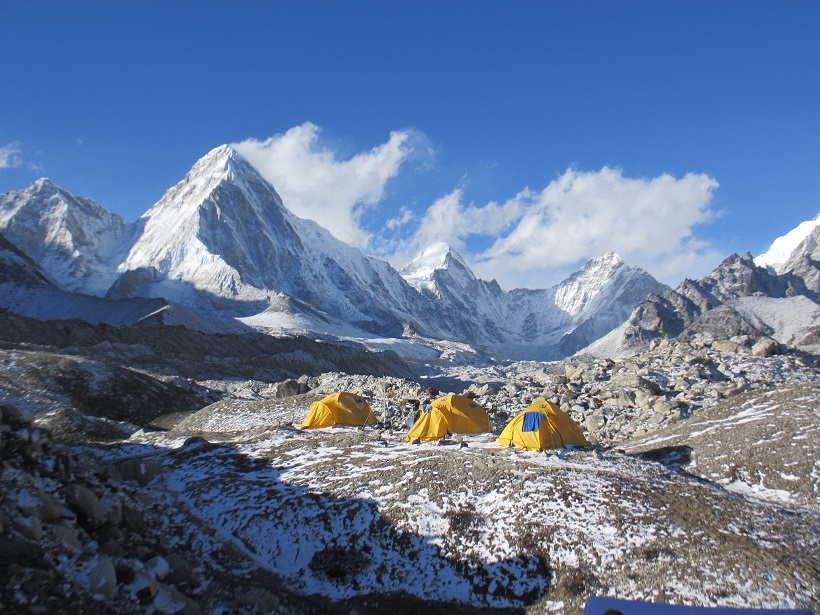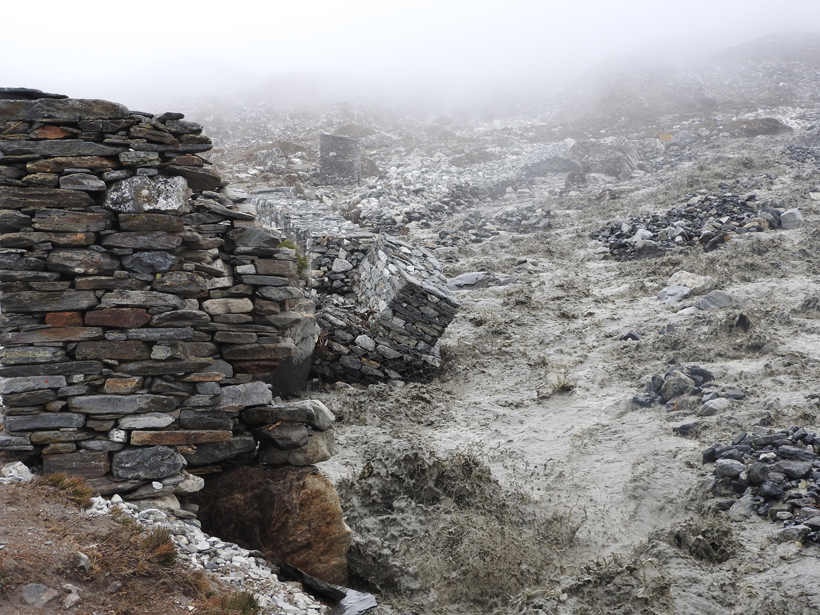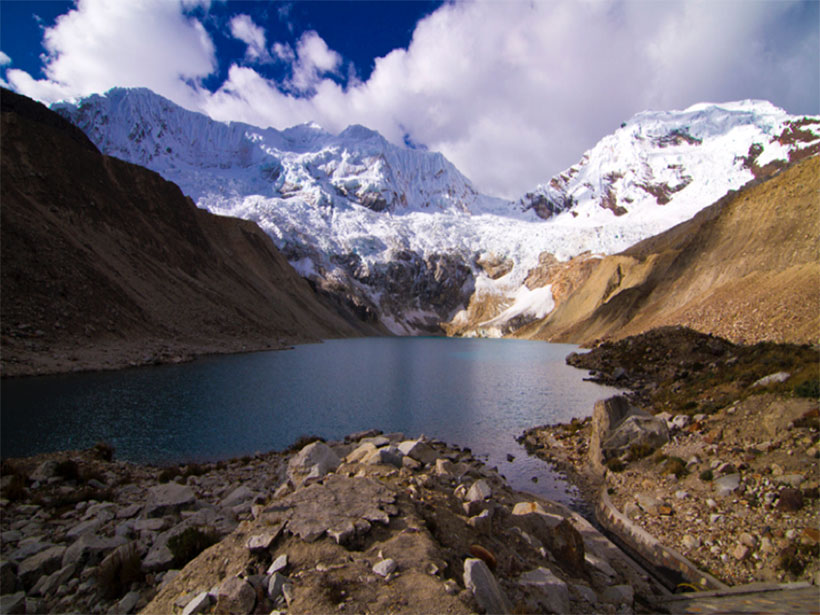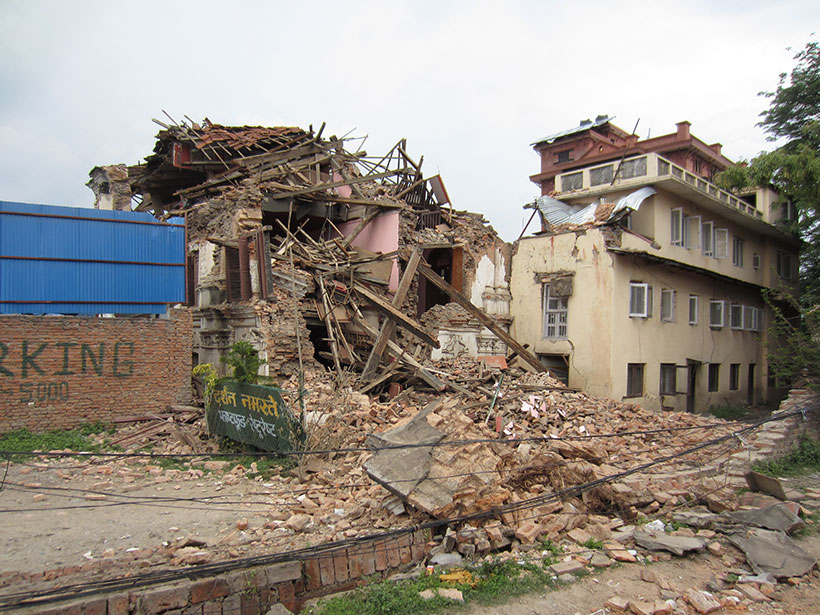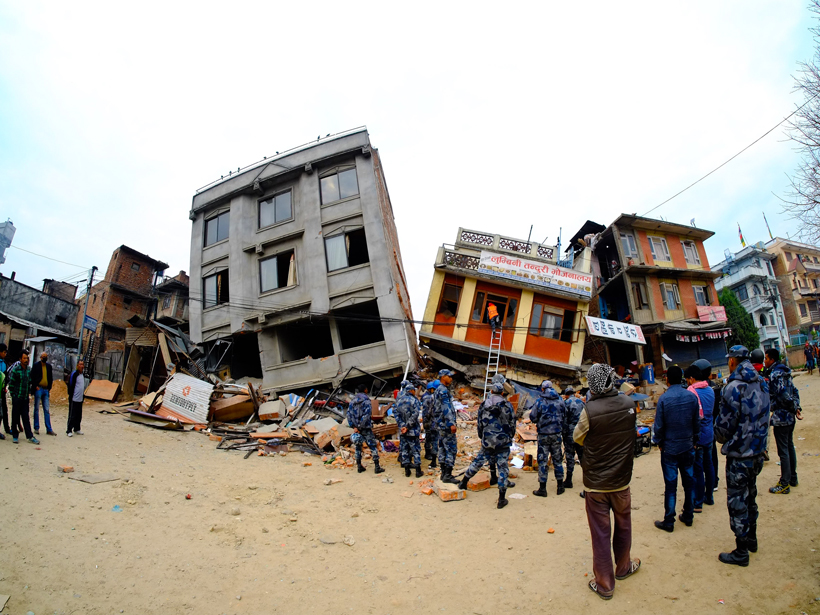Surface winds in a Himalayan valley are found to vary daily and seasonally due to factors including pressure gradient, advection, turbulent vertical mixing, and the presence of glaciers.
Nepal
Varying Impact of Earthquake- and Monsoon-Induced Landslides
Using nearly 50 years of satellite data and records stretching back millennia, scientists determine the relative frequency—and the erosional power—of monsoon- and earthquake-induced landslides in Nepal.
Glacial Lake Outburst Flood Captured in Seismic Recordings
A flood that thundered through eastern Nepal in July 2016 left a telltale seismic signature and caused more erosion than local monsoon rains, new research shows.
A Novel Way to Map Debris Thickness on Himalayan Glaciers
By combining changes in elevation with other data, scientists have developed a method for estimating the thickness of debris covering glaciers on whose water more than 800 million people depend.
Hot Water, Cold Ice
Despite careful planning, there can be many uncertainties and unknowns about doing field research in remote locations.
Glacial Outburst Flood near Mount Everest Caught on Video
More than 2 million cubic meters of water, hidden deep within Lhotse Glacier, spilled down toward the village of Chukhung, Nepal, in 2016.
Focusing the Human Lens on Glacial Outburst Floods
To better prepare mountain communities for possible floods, experts say that it is important to understand the communities themselves.
Weak Shaking Lessened Nepal Earthquake Impact
Modest ground motion for such a big quake and some prior training in earthquake preparedness averted worse death and destruction, earthquake scientists say.
Scientist's Field Season Ends with Nepal Quake
A graduate student studying tectonics found himself caught in a disaster at the end of fieldwork in the Himalayas.
Reducing Earthquake Risk in Nepal
What specific approaches work well to protect people from earthquake hazards in Nepal? Hazard mitigation expert Brian Tucker shares his insight.

